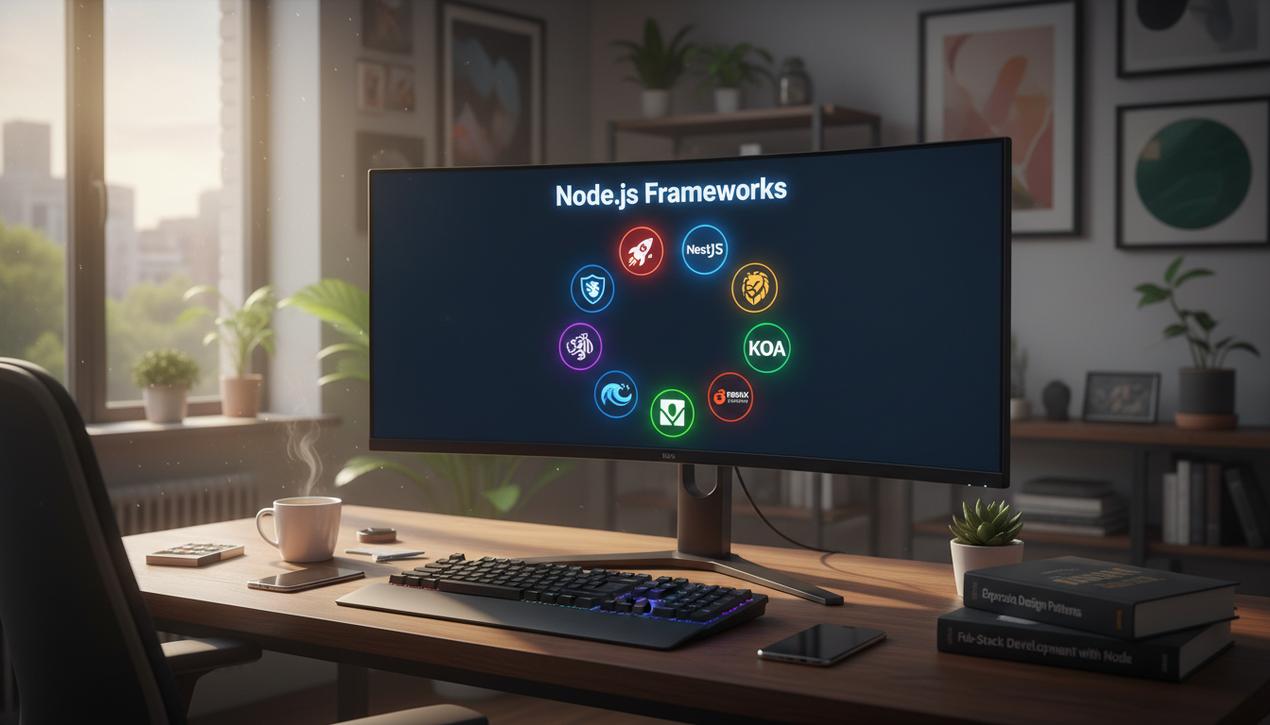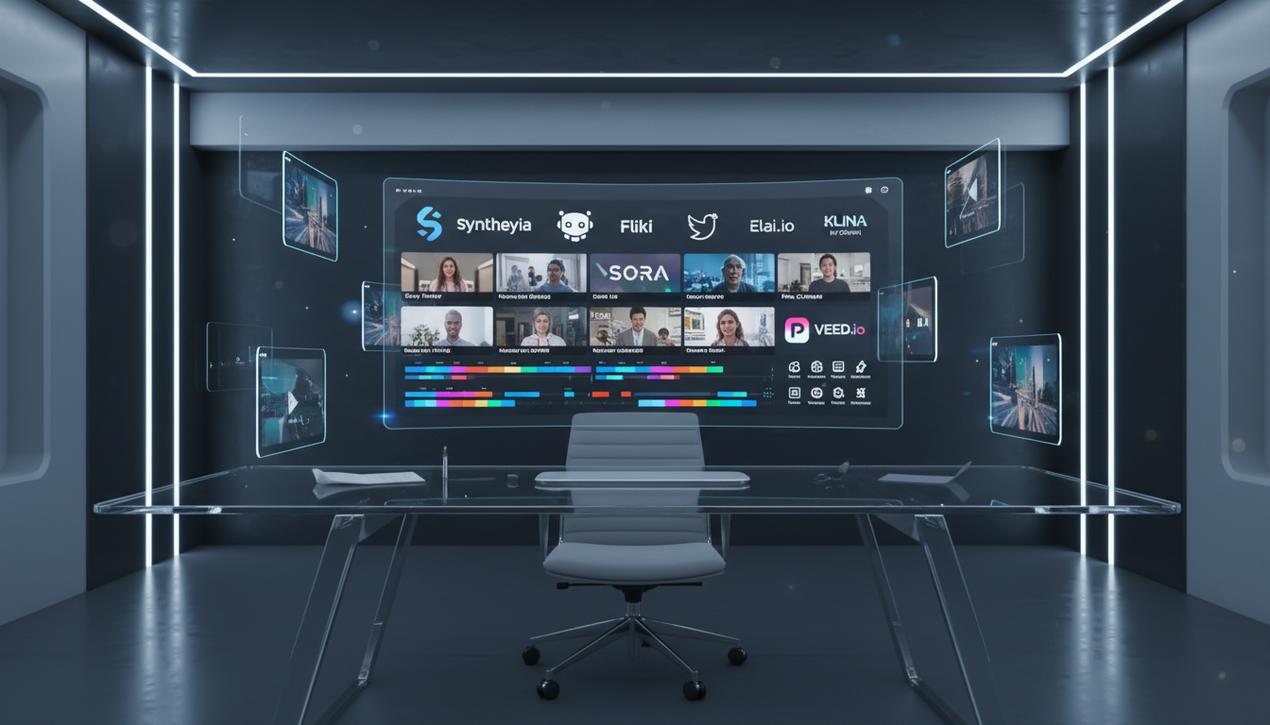Top Node.js Frameworks: The Complete 2025 Guide


In the modern web development ecosystem, Node.js has established itself as an essential runtime environment for building server-side applications, where proper setup is key to avoiding issues like a 403 error. Its ability to handle asynchronous, non-blocking operations makes it a top choice for real-time applications, microservices, and high-performance APIs. Industry statistics for 2025 show that Node.js is used by tens of millions of developers worldwide and is the runtime of choice for numerous Fortune 500 companies. However, to unlock its full potential, developers rely on frameworks. These provide structure, tools, and abstractions that accelerate development, improve maintainability, and ensure project scalability. Faced with a multitude of options, choosing the right Node.js framework can be complex. This comprehensive guide analyzes the best frameworks available in 2025, detailing their strengths, weaknesses, and ideal use cases to help you make the most informed decision for your project.
How to Choose the Right Node.js Framework
Before diving into our comparison, it’s essential to define the selection criteria. The “best” framework is always the one that best meets the specific requirements of your project. Here are the main factors to consider:
- Project Type: Are you developing a REST API, a full-stack application, a real-time app, or a static site? Some frameworks are specialized, while others are more versatile.
- Performance: Does your application need to handle a high volume of concurrent requests? Is response speed critical? Frameworks like Fastify are optimized for raw performance.
- Learning Curve: Is the development team experienced with Node.js? A minimalist framework like Express is easy to get started with, whereas a more structured framework like NestJS requires a greater initial investment.
- Ecosystem and Community: A popular framework benefits from a large community, numerous plugins, and extensive documentation, making it easier to solve problems and add features.
- TypeScript Support: Using TypeScript is a major trend for improving code robustness and maintainability. Native compatibility is a significant advantage.
The Top Node.js Frameworks in 2025
Our selection covers a wide range of needs, from minimalist API frameworks to complete full-stack solutions for modern web applications.
Backend and API Frameworks
1. Express.js
Considered the de facto standard for backend development with Node.js, Express is a minimalist and flexible framework. Launched in 2010, it provides a robust set of features for building web applications and APIs without imposing a rigid structure, an approach that differs from many top Java frameworks. Its simplicity is its greatest strength.
- Ideal for: REST APIs, microservices, rapid prototyping.
- Advantages: Very low learning curve, huge community, mature middleware ecosystem, great flexibility.
- Disadvantages: Minimalist by default, requires numerous modules for advanced features, can lead to less structured code on large projects.
2. NestJS
NestJS is a progressive framework for building efficient, reliable, and scalable server-side applications. Heavily inspired by Angular, it uses TypeScript by default and imposes a modular and structured architecture. It incorporates concepts from object-oriented programming, functional programming, and reactive programming.
- Ideal for: Enterprise applications, microservices, complex APIs.
- Advantages: Structured and maintainable architecture, native TypeScript support, dependency injection, excellent documentation.
- Disadvantages: Steeper learning curve, may seem too rigid for small projects.
3. Fastify
As its name suggests, Fastify is focused on speed. It is one of the fastest web frameworks in the Node.js ecosystem, capable of handling thousands of requests per second with minimal overhead. Its architecture is extensible via a plugin system, and it offers an excellent developer experience.
- Ideal for: High-performance APIs, services requiring low latency.
- Advantages: Exceptional performance, very fast built-in logger (Pino), JSON schema validation, growing plugin ecosystem.
- Disadvantages: Smaller community than Express, fewer third-party middlewares available.
4. Koa.js
Developed by the team behind Express, Koa is a more modern and lightweight version. It gets rid of callbacks in favor of async/await functions, which allows for more elegant middleware management and better error handling. Its core contains no middleware, offering maximum flexibility.
- Ideal for: Developers who want full control and use modern JavaScript features.
- Advantages: Use of promises and async/await, better error handling, very lightweight and modular.
- Disadvantages: Requires building your own middleware stack, less “out-of-the-box” than Express.
5. AdonisJS
AdonisJS is a full-featured MVC (Model-View-Controller) framework that brings the structure and elegance of frameworks like Laravel to the Node.js world. It is designed to be an all-in-one solution with its own ORM, authentication system, and many other built-in modules.
- Ideal for: Traditional web applications, complete REST APIs.
- Advantages: Clear MVC structure, powerful Lucid ORM, built-in security, excellent developer experience.
- Disadvantages: More opinionated than other frameworks, medium-sized community.
Full-Stack Frameworks
6. Next.js
Next.js is a React framework for production. It has become the go-to solution for creating modern web applications, whether they are static, server-side rendered (SSR), or a combination of both. It offers automatic performance optimizations and an exceptional developer experience.
- Ideal for: Marketing sites, e-commerce platforms, complex dashboards, full-stack web applications.
- Advantages: Server-side rendering and static site generation, file-based routing, automatic optimizations (images, fonts), Vercel ecosystem.
- Disadvantages: Can be complex for simple projects, strongly tied to the React ecosystem.
7. Remix
Remix is another full-stack web framework based on React, which focuses on web fundamentals like HTML forms and HTTP responses. It aims to provide an excellent user experience by loading data in parallel and optimizing page transitions.
- Ideal for: Web applications where resilience and user experience are paramount.
- Advantages: Nested data management, excellent form handling, optimized transitions.
*Disadvantages: Newer community than Next.js, slightly different approach that may require adaptation.
8. Meteor.js
Meteor is an open-source isomorphic JavaScript framework that allows for the creation of web, desktop, and even helps to create an Android app using a single language. It is distinguished by its ability to automatically propagate data changes to clients in real-time without developer effort.
- Ideal for: Real-time collaborative applications, rapid prototyping.
- Advantages: Full-stack development in pure JavaScript, real-time reactivity by default, cross-platform.
- Disadvantages: Less popular today, may be less flexible for complex architectures.
Specialized Libraries and Frameworks
9. Socket.io
More a library than a full framework, Socket.IO is the go-to tool for building real-time applications. It enables bidirectional and event-based communication between the client and the server, which is perfect for chat applications, online games, or live notifications.
- Ideal for: Chats, real-time notifications, collaborative applications.
- Advantages: Reliable and robust, automatically handles reconnections, simple API to use.
- Disadvantages: Specific to real-time communication, does not handle application logic.
10. Hapi.js
Hapi is a robust and secure framework, originally developed at Walmart to handle Black Friday traffic. It emphasizes configuration over code, and its plugin-based architecture makes it very extensible and perfect for large teams and enterprise applications.
- Ideal for: Large enterprise applications, services requiring high security and reliability.
- Advantages: Built-in security, powerful plugin architecture, configuration validation.
- Disadvantages: Less popular, can seem verbose for simple tasks.
11. Strapi
Strapi is the leading open-source headless CMS framework based on Node.js. It allows for the rapid creation of flexible and customizable APIs to deliver content to any frontend (website, mobile app, etc.). It is a powerful solution for managing content in a decoupled manner.
- Ideal for: Projects requiring a CMS, content management for cross-platform applications.
- Advantages: Customizable admin panel, rapid API creation, 100% JavaScript.
- Disadvantages: Primarily focused on content management.
12. SvelteKit
While Svelte is a UI component framework, SvelteKit is its official application framework. Similar to Next.js for React, SvelteKit provides a complete solution for building robust, high-performance web applications of all sizes, with a focus on a great developer experience and excellent performance.
- Ideal for: Web developers looking for an alternative to React, high-performance web applications.
- Advantages: Blazing fast performance (compiles to vanilla JS), server-side rendering, routing, and code-splitting out of the box.
- Disadvantages: Smaller ecosystem compared to React/Next.js.
Choosing a Node.js framework in 2025 depends entirely on the nature of your project. For a quick API, Express remains a solid and simple choice, while Fastify reigns supreme for pure performance. For structured enterprise applications, NestJS and AdonisJS provide a robust and maintainable foundation. In the full-stack world, Next.js dominates the React ecosystem, offering unparalleled power and flexibility for modern web applications. Carefully evaluate your needs in terms of performance, structure, and developer experience to select the tool that will allow you to build your next application with success and efficiency.




